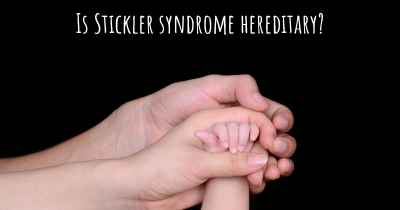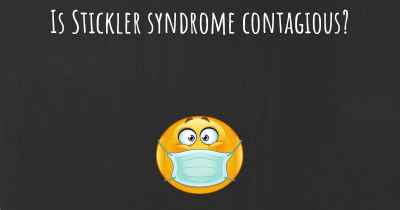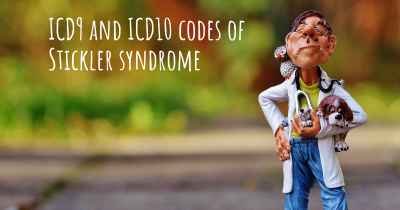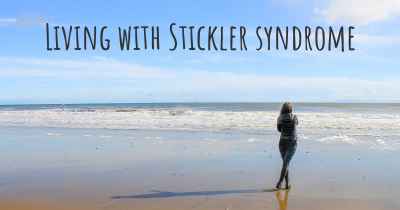What is the life expectancy of someone with Stickler syndrome?
Life expectancy of people with Stickler syndrome and recent progresses and researches in Stickler syndrome
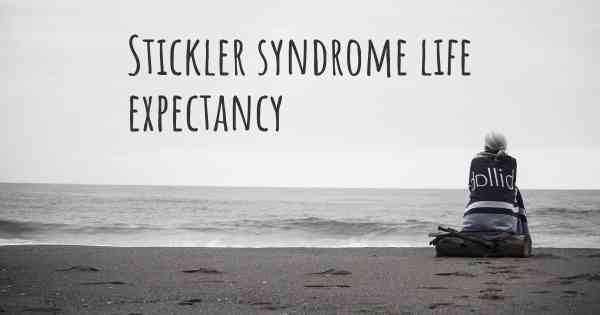
Stickler syndrome is a genetic disorder that affects connective tissues, primarily in the eyes, ears, and joints. The life expectancy of individuals with Stickler syndrome can vary depending on the severity of their symptoms and associated complications. While there is no specific data on life expectancy for Stickler syndrome, it is important to note that it is a chronic condition that requires ongoing medical management. Early diagnosis, regular medical care, and appropriate interventions can significantly improve the quality of life for individuals with Stickler syndrome. It is crucial for individuals with Stickler syndrome to work closely with healthcare professionals to address any potential complications and optimize their overall health.
Stickler syndrome is a rare genetic disorder that affects various parts of the body, including the eyes, ears, joints, and face. It is characterized by a group of related conditions known as hereditary progressive arthro-ophthalmopathy. Stickler syndrome is caused by mutations in certain genes that are responsible for the production of collagen, a protein that provides structure and strength to connective tissues throughout the body.
Due to the wide range of symptoms and severity, it is challenging to determine a precise life expectancy for individuals with Stickler syndrome. The prognosis can vary significantly depending on the specific genetic mutation, the severity of symptoms, and the management of associated complications.
Visual impairments are one of the primary features of Stickler syndrome. Many individuals with the condition experience nearsightedness (myopia), astigmatism, and retinal detachment. Retinal detachment, if left untreated, can lead to severe vision loss or blindness. Prompt diagnosis and appropriate treatment, such as surgical intervention, can help mitigate the risk of vision-related complications.
Hearing loss is another common manifestation of Stickler syndrome. It can range from mild to profound and may affect one or both ears. Early identification through regular hearing screenings and the use of hearing aids or other assistive devices can significantly improve communication abilities and overall quality of life.
Joint problems are prevalent in individuals with Stickler syndrome. Joint pain, stiffness, and hypermobility can impact mobility and daily activities. Physical therapy, exercise, and orthopedic interventions can help manage joint-related symptoms and improve functional abilities.
Craniofacial abnormalities are often present in Stickler syndrome. These include a characteristic facial appearance with a flat midface, small chin, and cleft palate. Cleft palate can cause feeding difficulties and may require surgical correction. Regular monitoring by a multidisciplinary team of specialists, including geneticists, orthodontists, and speech therapists, is crucial to address craniofacial issues effectively.
Stickler syndrome can also be associated with cardiovascular abnormalities such as mitral valve prolapse and aortic dilation. Regular cardiac evaluations are necessary to detect and manage any potential cardiac complications.
While Stickler syndrome can pose significant challenges and impact various aspects of an individual's health, it is important to note that life expectancy can vary widely. With appropriate medical management, early intervention, and a comprehensive care plan, individuals with Stickler syndrome can lead fulfilling lives.
It is crucial for individuals with Stickler syndrome to receive regular medical follow-ups and screenings to monitor and address any potential complications. Collaborative care involving specialists from different disciplines, including ophthalmology, otolaryngology, orthopedics, genetics, and cardiology, is essential to provide comprehensive support and optimize outcomes.
Furthermore, emotional and psychological support is vital for individuals with Stickler syndrome and their families. Connecting with support groups, counseling services, and organizations specializing in rare genetic disorders can provide valuable resources and a sense of community.
In conclusion, Stickler syndrome is a complex genetic disorder that can affect multiple systems in the body. The life expectancy of individuals with Stickler syndrome is highly variable and depends on various factors, including the specific genetic mutation and the management of associated complications. With appropriate medical care, early intervention, and a multidisciplinary approach, individuals with Stickler syndrome can lead fulfilling lives and overcome many of the challenges associated with the condition.
Posted Mar 9, 2017 by Lara 1003
Posted Mar 9, 2017 by Agustin y Juan 1000
Posted Mar 21, 2017 by Scott 1000
Posted Nov 18, 2018 by Carl 1800

